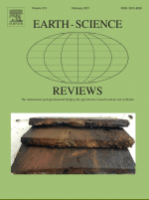“A key question about the end-Permian mass extinction (EPME) is why it has been so difficult to determine its impact on land plants: some analyses show a very clear loss of diversity and yet others show little change. Perhaps the key issue is the scale at which the diversity data are analysed. Here we investigate plant diversity changes through the Permian to Middle Triassic in the North China Block (NCB) based on an updated dataset and diversity measured at different geographic-temporal scales. We define regional-scale diversity for the whole (palaeo)continent, including diverse depositional environments with plant fossils; landscape-scale diversity for a local area within the same depositional system, such as a fluvial or deltaic system; and bed-scale diversity for an individual bed formed in a relatively short time (e.g. less than 10,000 years). The floras from the Taiyuan, Shanxi, Lower Shihhotse, and Upper Shihhotse formations, and their lateral equivalents, seem to be relatively continuous and stable, dominated by wetland assemblages, with comparable diversities at bed, landscape and regional scales, and relatively stable extinction, origination, and turnover rates. The transition between the Upper Shihhotse and Sunjiagou formations (and lateral equivalents) saw the largest extinction of regional-scale generic and species diversity, with high extinction rates and low origination rates, but only slight changes in average bed-scale and landscape-scale diversities. After this, coal swamps disappeared, most widespread genera became extinct or shrank in distribution area, red beds became common, and surviving plants were walchian conifers, peltasperms and other advanced gymnosperms, indicating an overall drying trend in climate. A further extinction event happened at the transition between the Sunjiagou and Liujiagou formations (and lateral equivalents), with the highest species extinction and origination rates at regional scale. Almost all Permian plant species became extinct and were replaced by new taxa, while the bed-scale and landscape-scale diversities changed little. The Sunjiagou/Liujiagou transition event correlates with the marine EPME and the collapse of Gigantopteris-dominated communities in southwestern China, and probably represents the terrestrial equivalent of the EPME in the NCB.” More in Earth-Science Reviews

